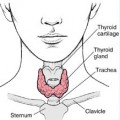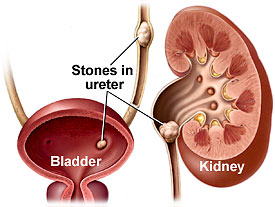Gynecological disorders encompass an expansive variety of conditions that affect female reproductive systems. To protect women’s general welfare and maintain reproductive health and overall well-being, these illnesses may manifest themselves in various ways, causing symptoms and difficulties that necessitate early diagnosis and appropriate treatments. We will discuss common gynecological disorders, their diagnosis procedures, and available treatment options. We will also discuss the billing and coding requirements for OBGYN services as part of overall healthcare services, the billing requirements for patient healthcare packages, and the billing requirements for patients receiving OBGYN services as part of comprehensive patient healthcare packages.

Understanding Gynecological Disorders
Overview of the Female Reproductive System
As part of comprehensively exploring particular gynecological concerns, it is crucial to establish an in-depth knowledge base regarding the female reproductive system. This elaborate structure comprises numerous organs, including the ovaries, fallopian tubes, uterus, cervix, and vagina, each working closely together in orchestrating critical processes like menstruation, pregnancy and childbirth.
Importance of Reproductive Health
Reproductive wellness is at the core of women’s overall health. Achieving optimal reproductive wellness means preventing and treating potential gynecological issues and optimizing its functioning – in other words, regular check-ups to detect conditions that threaten female well-being, such as pelvic floor dysfunctions. A comprehensive approach is vital when it comes to reproductive well-being!
Common Gynecological Disorders
Menstrual Disorders: Menstrual disorders are one of the most prevalent gynecological concerns, comprising various conditions which alter menstruation, such as irregular periods, heavy or absent periods (menorrhagia), or no periods at all (amenorrhea). Menstrual disorders should always be evaluated immediately as these could indicate deeper health concerns requiring further evaluation.
Polycystic Ovary Syndrome (PCOS): Polycystic Ovary Syndrome is a hormonal condition affecting many reproductive-age women that is marked by an enlarged ovary filled with fluid-filled cysts known as PCOS cysts that lead to irregular periods, infertility, an increased risk for diabetes, cardiovascular diseases as well as possible cancer risks – often with irregular menstruations cycles as well. PCOS causes irregular periods as well as fertility issues along with increased health risks like diabetes and cardiovascular problems, among other risks such as cancer risks. PCOS often leads to irregular periods with irregular periods as well as health risks like diabetes, cardiovascular issues, cancer risks as possible, cancer risks, and potential cancer risks as possible due to increased health risks caused by both PCOS-related conditions arising.
Endometriosis: Endometriosis is a chronic condition wherein the tissue that lines the uterus (endometrium) begins to protrude beyond its boundaries, often leading to severe menstruation pain and fertility issues. Early diagnosis and treatment are essential to manage symptoms while safeguarding fertility effectively.
Uterine Fibroids: Uterine fibroids are noncancerous growths of the uterus that may lead to heavy menstrual bleeding, pelvic pain, and pressure on nearby organs. Treatment options depend upon size and location; medications, minimally invasive procedures, or surgery could all provide potential solutions.
Pelvic Inflammatory Disease (PID): An infection of the female reproductive system known as pelvic inflammatory disease is brought on by STIs. Untreated PID can result in chronic pelvic pain and fertility issues; therefore, early diagnosis and treatment should be pursued to minimize potential risks and complications.
Ovarian Cysts: Ovarian cysts are fluid-filled sacs that develop on or inside the ovaries and frequently go away independently. But they could occasionally hurt or be connected to other problems that demand medical treatment.
Cervical and Ovarian Cancer: Cervical and ovarian cancer are among the most severe gynecological illnesses that must be routinely examined with procedures like Pap smears and HPV tests to achieve early diagnosis. Surgery, radiation therapy or chemotherapy could treat your condition depending on its severity.
Diagnosis of Gynecological Disorders
Medical History Review and Physical Examination: Diagnosing gynecological disorders begins with an exhaustive medical history review and physical exam of the patient, considering menstruation patterns, sexual activity history, and symptoms as an invaluable way of providing valuable insights. A physical exam might include conducting a pelvic exam to examine reproductive organs more fully.
Imaging and Diagnostic Tests: Medical imaging techniques such as ultrasound, CT scans, and MRI can visualize female reproductive organs and detect irregularities like fibroids, ovarian cysts or structural issues that might go undetected. Diagnostic tests such as Pap Smears, HPV tests or biopsies provide invaluable early cancer detection opportunities.
Blood Tests and Hormone Levels: Blood tests can provide valuable insight into hormone levels to detect conditions like PCOS or hormonal imbalance. Evaluation is especially crucial in cases that disrupt menstruation cycle flow.
Laparoscopy: Laparoscopy is a minimally invasive surgical process which provides direct visualization of pelvic organs for medical diagnosis and treatment purposes, such as endometriosis or cysts. Laparoscopy may also help detect other conditions which present similarly.
Treatment of Gynecological Disorders
Medication: Medication can often help women manage gynecological disorders effectively. Hormonal treatments, pain relievers, and antibiotics may all prove valuable tools in alleviating symptoms and targeting potential root causes of their disease.
Minimally Invasive Procedures: Hysteroscopy and laparoscopy are negligibly intrusive methods that offer practical options to more invasive surgical approaches for treating different gynecological issues like fibroids, endometriosis, and ovarian sores. Whereas less invasive strategies like these frequently give alleviation, more serious surgeries such as hysterectomy or oophorectomy (the evacuation of either or both the uterus and ovaries) may still be required in cases such as menopause side effects or when there are genuine restorative conditions show such as cancer.
Fertility Preservation: Ladies looking to draw out their ripeness may require extraordinary intercessions like fertility-sparing surgeries or helped regenerative advances to protect it longer. Such efforts include these gynecological disorders. Fertility-preserving surgeries or assisted reproductive technologies could offer these solutions and can ensure women can have children.
Preventive Measures: Preventative measures such as vaccination against HPV (human papillomavirus) to decrease cervical cancer risks and adopting safe sexual practices which lower the risk for sexually transmitted infections are critical elements to reduce instances of gynecological issues.
OBGYN Billing and Coding
Role of Medical Billing and Coding: OBGYN billing and Coding play an essential part in healthcare administration for gynecologists and obstetricians who provide preventive services, diagnose disorders, and treat them for women of reproductive age. Accurate billing practices ensure full reimbursement, comply with regulations, provide high-quality care while meeting reimbursement targets, and maintain regulation compliance.
Critical Considerations in OBGYN Billing and Coding: Billing and coding must consider a comprehensive range of services in OBGYN medicine, such as office visits, diagnostic tests, surgical procedures, and more. Key components to keep in mind for OBGYN billing include:
Accurate Coding of Gynecological Procedures and Surgeries: Proper documentation of Patient Encounters and Medical Needs. Compliance with Insurance Guideline Standards / Regulations. Efficient Claims Processing Management Solutions are used.
Challenges in OB/GYN Billing and Coding
OB/GYN billing and coding present particular challenges, which include:
Frequent updates and modifications of billing guidelines. Complexities relating to surgical procedure coding and ensuring accurate coding across OBGYN specialists’ full range of services offered. Staying compliant with healthcare regulations requires keeping up-to-date on insurance requirements and remaining aware of healthcare laws.
Importance of Professional OB/GYN Billing and Coding Services
Given the complexity and intricacies associated with OB/GYN billing and coding, many healthcare practices and clinics choose professional OB/GYN billing and coding services provided by professional billing companies or professionals who understand specific field-specific needs. Let’s examine their importance and benefits below:
Accuracy and Compliance: One of the critical advantages of OB/GYN billing and coding services provided by professional medical billing and coding specialists is accuracy and compliance. Medical billers are trained to navigate complicated coding systems while following all regulations to ensure claims are submitted accurately for reimbursement by healthcare providers, helping reduce financial risks by eliminating claim denials or audits.
Expertise in Gynecological Procedures: Billing and coding services specializing in OBGYN have vast knowledge of all of the procedures performed by specialists, from hysteroscopy and laparoscopy to colposcopy and cervical biopsies – to ensure accurate billing by industry standards.
Timely Claim Submission: Reliable cash flow is critical for OBGYN practices. Professional billing and coding services have adequate systems in place that quickly process claims for OBGYN providers so that healthcare services providers receive reimbursement promptly for the work provided by healthcare providers.
Reduction of Administrative Burden: OBGYN practices may find managing billing and coding an administrative strain; outsourcing these tasks allows healthcare providers and staff members to focus their energy on patient care. Outsourcing these tasks is likely to increase efficiency and enhance patient satisfaction.
Keeping Up with Regulatory Changes: To remain compliant, medical billing and coding services must stay abreast of ever-evolving regulatory updates. As OB/GYN billing and coding providers invest in ongoing training to keep abreast of these developments, professional OB/GYN billing and coding services ensure their employees always understand current coding regulations as they arise.
Improved Revenue Management: Professional billing and coding services ensure accurate, compliant billing and offer valuable insights and reports regarding revenue management. They can identify areas for optimization in OBGYN practices’ billing processes that result in increased revenues and financial security.
Conclusion
Gynecological issues must be treated promptly and efficiently, as they can have devastating consequences for women. Obstetricians and gynecologists are significant in providing preventative, diagnostic, and curative healthcare to their patients. At the same time, OBGYN billing and coding practices ensure patients get appropriate healthcare services at a manageable financial burden for practices.
Gynecological disorders encompass an expansive spectrum of conditions that impact female reproductive systems. Diagnosing and treating them accurately requires medical knowledge combined with accurate billing and coding services; healthcare providers specializing in OBGYN often utilize professional billing and coding services to focus on providing high-quality patient care while remaining financially sustainable.
OB/GYN billing and coding services are crucial parts of healthcare delivery systems that help streamline administrative processes, facilitate timely reimbursements, and ultimately facilitate effective care delivery. Acknowledging their value to OBGYN practices, they can continue providing essential care while remaining financially healthy.



 (3 votes, average: 3.67 out of 5)
(3 votes, average: 3.67 out of 5)









